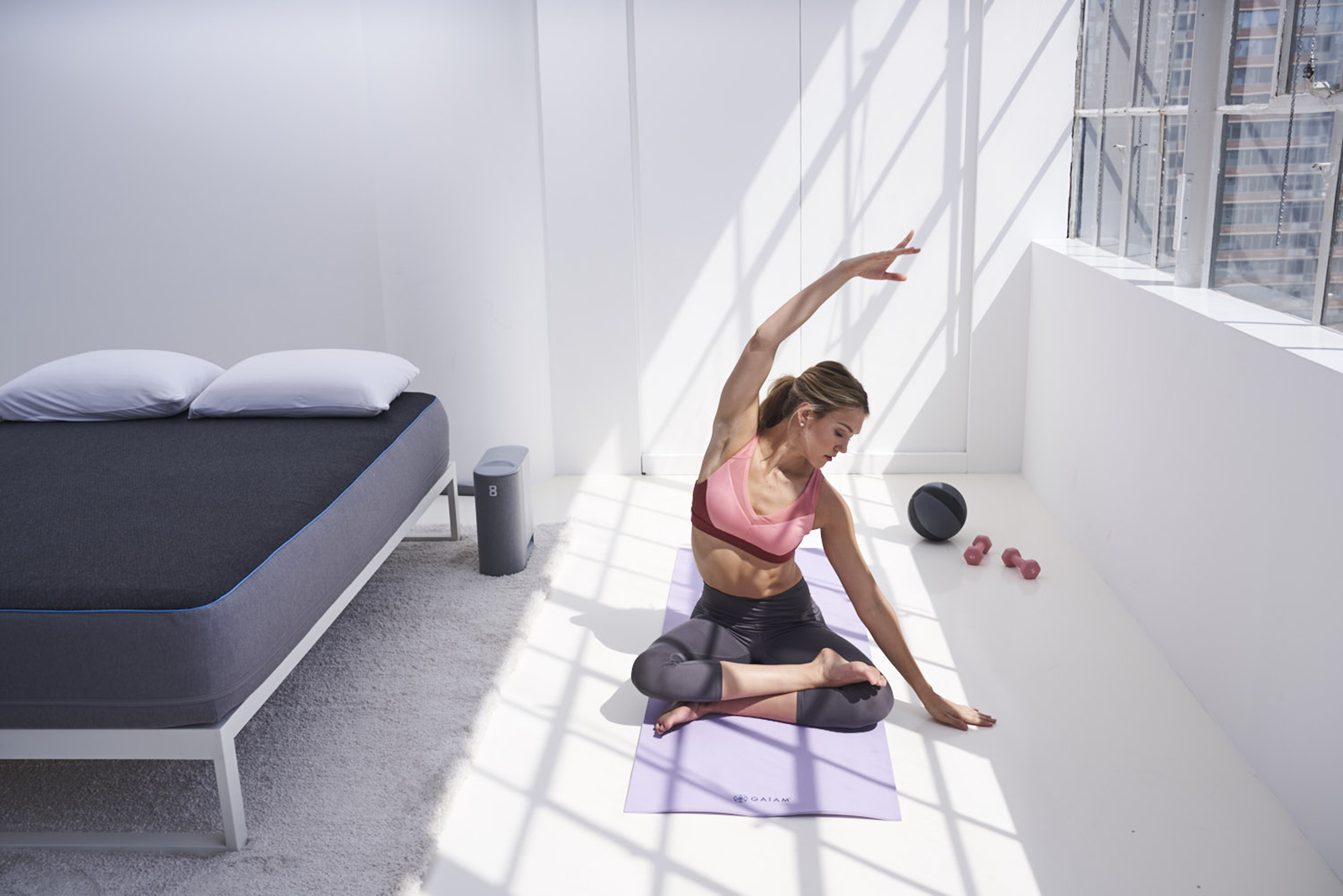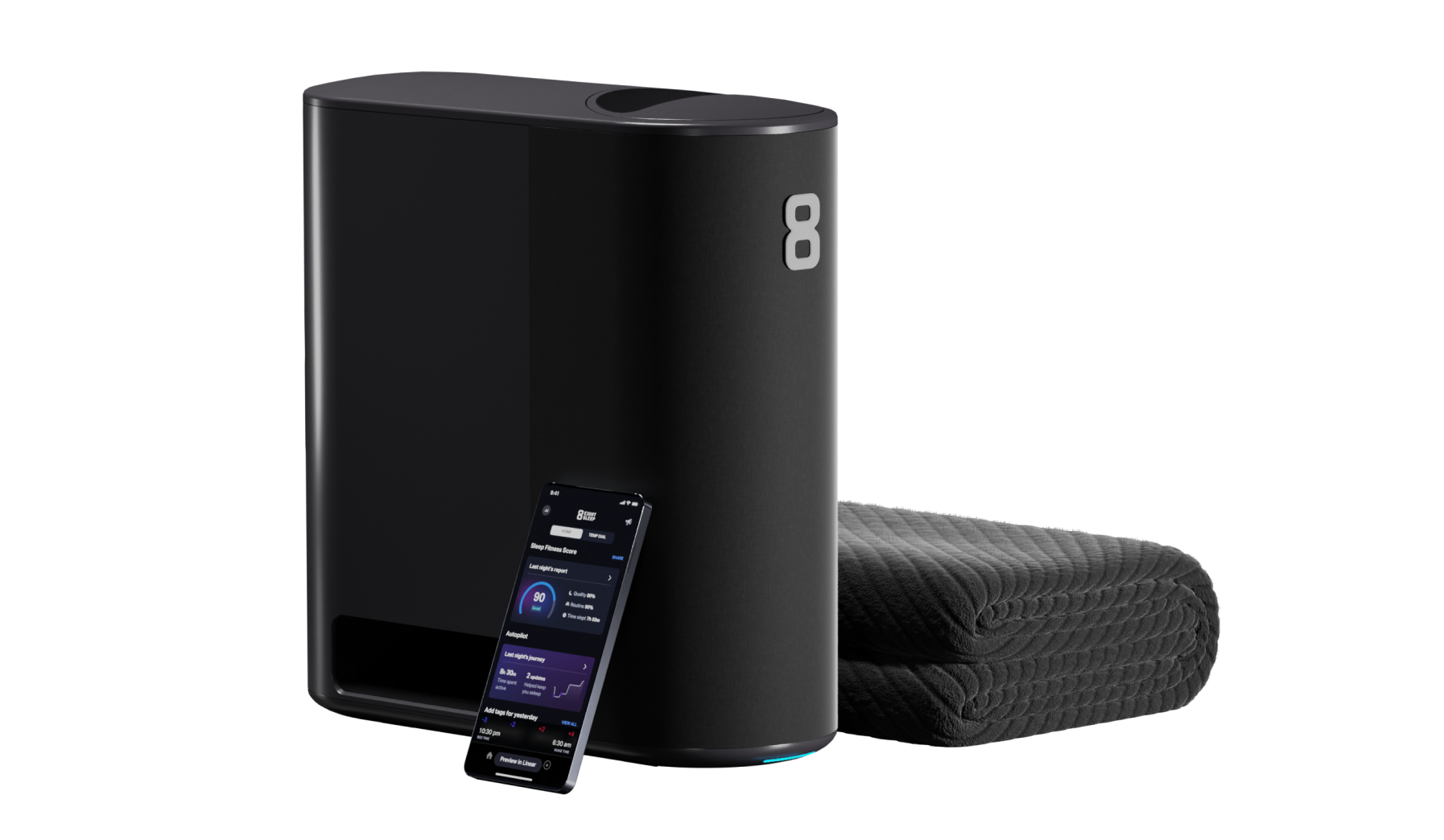If you’re interested in tracking your health, recovery, and performance, then you’ve probably heard of Heart Rate Variability. It’s a very important health metric that helps you understand your recovery and fatigue. Manish Chablani, Eight Sleep’s Head of AI and Research, knows everything there is to know about HRV. Without diving too much in the science of HRV, Manish explains what HRV is, how to measure it, and how to improve it.
What is HRV?
Heart Rate Variability or HRV is a metric to measure the variance in the time interval between heartbeats in milliseconds. A healthy heart does not beat a regular rhythm like a metronome, a device that’s used to keep the beat perfectly even in music. Instead, there’s a constant variation between heartbeats. HRV is a very personalized metric that tells you a lot about your health. It’s different from heart rate, which is measured by the number of times your heart beats per minute.

Image: Heart Rate Variability. Source: Firstbeat
The variation is controlled by the Autonomic Nervous System (ANS). You can divide ANS into two different components: the sympathetic nervous system and the parasympathetic nervous system. The sympathetic component controls your body’s ‘fight or flight’ response and it reacts to internal or external stressors. The parasympathetic promotes a ‘rest and digest’ response that calms the body down and it is associated with recovery.
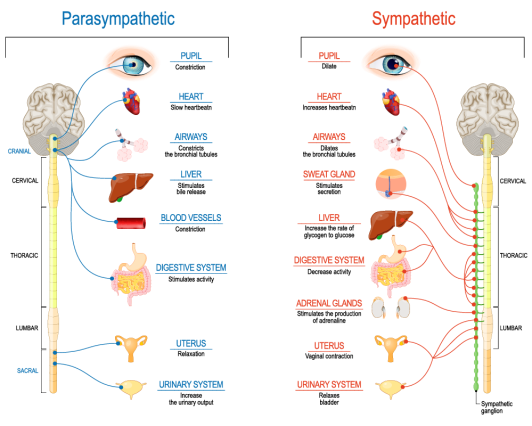
Image: The parasympathetic and sympathetic nervous systems. Source: Imotions
Why should you measure HRV?
HRV is a very effective way to measure your ANS balance. Generally, your ANS is in balance when HRV is high: your body is responsive to both systems (sympathetic and parasympathetic) and you’re capable of adapting to different situations. When your HRV is low, it means that your body is recovering or responding to stress. Stress can either be physical (for example when you’re recovering from a good workout or fighting a virus) or physiological. The more in balance your ANS is, the more variability you will see in the heart rate as the two systems take turns being active.
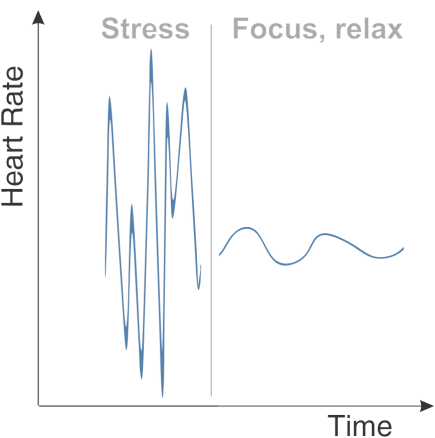
Image: graph shows the same person. First half in stress, second half in a focused, relaxed situation. Source: Wiki commons
As your body adapts, HRV fluctuates and it’s very common and expected to see occasional days of low HRV. However, if your HRV is low for more than a couple of days then that indicates that your body is under a lot of stress and needs to work harder for something. This makes HRV a great metric to spot the beginning of an illness before you feel any symptoms. If you have low HRV ranges for a couple of days, try to give your body some more rest and sleep, eat healthier, and avoid alcohol to slowly recover.
What is a good HRV range?
There are no good or bad HRV ranges. HRV is a highly sensitive metric and very personal. Some people have steady HRV scores while others have HRV scores that fluctuate greatly throughout the day. So you should never compare your HRV scores to someone else, even if they’re the same gender and age. Instead, you should compare your HRV to your own baseline to make sure your ANS is in balance.
There are many factors that impact your HRV. These are the most common ones:
-
Exercise, recovery time
-
Alcohol, caffeine, stress, sleep deprivation
-
Age, gender
-
Mindfulness, meditation
Pay attention to those factors and see if they cause your HRV to fluctuate. If so, try to make a lifestyle change. HRV is a good feedback mechanism. It immediately shows you what impact that lifestyle change has on your nervous system.
Why measure HRV during sleep?
Eight Sleep recently released a new update that allows you to measure your HRV during your sleep, just by sleeping on the Pod Pro every night. This is the best way to measure your HRV. Why? During deep sleep, your HRV won’t be affected by internal or external factors such as exercise or mental stress. It provides you a clean window to measure and track your HRV over a period of time. Once you have a baseline, you can get a good sense of how stressed or relaxed you are.
Once Pod users have HRV baselines, we can start creating valuable insights for the users. For example, we will notify users when they go below or under their baseline to make HRV scores more understandable and visible for them.
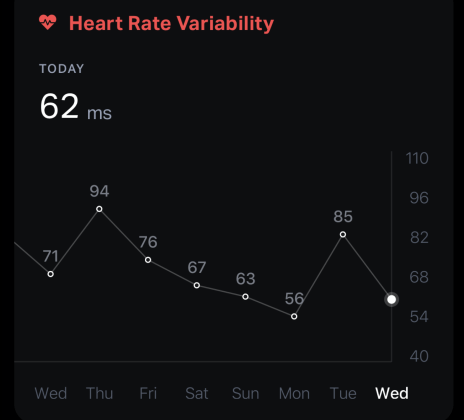
Image: HRV metrics in the Eight Sleep app. Source: Eight Sleep
How to improve HRV?
There are some hacks you can use to improve your HRV.
-
Quality sleep. Getting into deep sleep is a great way to increase your HRV. Try to sleep for 7-9 hours every night.
-
Deep breathing. You can get out of the fight or flight response by activating your parasympathetic nervous system. Do this by deep breathing for 10-20 minutes per day. It will help you take control of your body and stop the stress hormone.
-
Hydration. The body is about 60% water. It plays a critical role in performance and wellbeing. Try to drink at least 2 liters of water per day.

